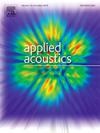Dynamic modeling and optimization method for large amplitude ultrasonic osteotome for surgical robots
IF 3.4
2区 物理与天体物理
Q1 ACOUSTICS
引用次数: 0
Abstract
The current clinical application of ultrasonic osteotomes is mainly aimed at use by surgeons, with a lightweight design and small amplitude that limit the ability to fully utilize the advantages of surgical robots, such as load capacity, repetitive accuracy, and overall functionality. The cutting efficiency of traditional small-amplitude ultrasonic osteotomes is relatively low, making them mainly suitable for localized cutting of bone tissue with a thickness of less than 3 mm. To improve the clinical efficacy of ultrasonic osteotomes, this paper introduces a large-amplitude ultrasonic osteotome designed for surgical robots and establishes a corresponding dynamic model. Utilizing the boundary conditions of freedom at both ends and the continuity conditions of displacement and elastic force at each connection, we derive the longitudinal vibration frequency equation and an analysis formula for vibration modes. The dynamic model of the ultrasonic osteotome proposed in this paper serves as the foundation for optimization design and provides a mathematical modeling method that quantitatively describes the resonant frequency and vibration displacement characteristics of the ultrasonic osteotome without the need for complex and time-consuming numerical calculations, such as finite element analysis. A multi-objective optimization model for the ultrasonic osteotome was subsequently developed based on the dynamic model, and the optimal solution was derived using the three-stage method outlined in this paper. The feasibility of this dynamic modeling and optimization method for ultrasonic osteotomes in surgical robotic applications was verified by comparing the vibration characteristics and cutting performance of the ultrasonic osteotome before and after optimization through simulation analysis, performance testing, and cutting experiments. The results of this research provide novel design ideas and performance optimization methods for the application of ultrasonic osteotomes in the field of surgical robots, with the potential to establish a comprehensive design system for ultrasonic orthopedic surgical instruments.
求助全文
约1分钟内获得全文
求助全文
来源期刊

Applied Acoustics
物理-声学
CiteScore
7.40
自引率
11.80%
发文量
618
审稿时长
7.5 months
期刊介绍:
Since its launch in 1968, Applied Acoustics has been publishing high quality research papers providing state-of-the-art coverage of research findings for engineers and scientists involved in applications of acoustics in the widest sense.
Applied Acoustics looks not only at recent developments in the understanding of acoustics but also at ways of exploiting that understanding. The Journal aims to encourage the exchange of practical experience through publication and in so doing creates a fund of technological information that can be used for solving related problems. The presentation of information in graphical or tabular form is especially encouraged. If a report of a mathematical development is a necessary part of a paper it is important to ensure that it is there only as an integral part of a practical solution to a problem and is supported by data. Applied Acoustics encourages the exchange of practical experience in the following ways: • Complete Papers • Short Technical Notes • Review Articles; and thereby provides a wealth of technological information that can be used to solve related problems.
Manuscripts that address all fields of applications of acoustics ranging from medicine and NDT to the environment and buildings are welcome.
 求助内容:
求助内容: 应助结果提醒方式:
应助结果提醒方式:


